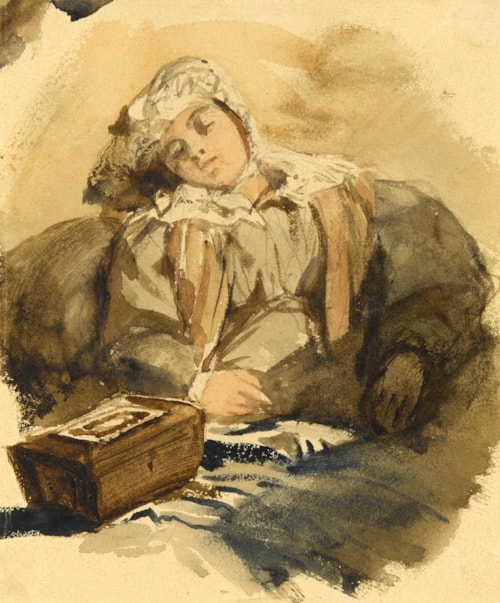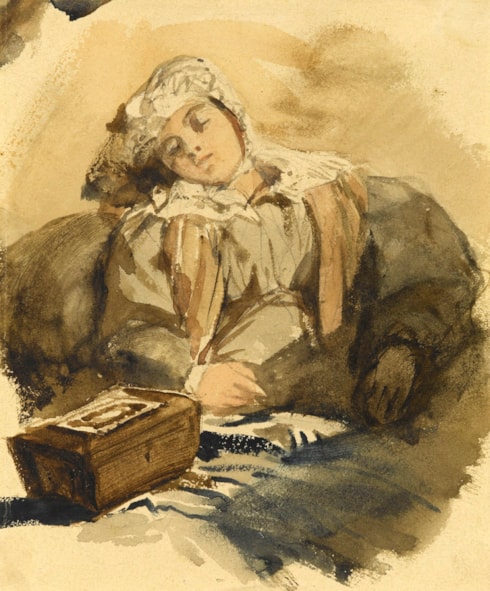
Richard Parkes BONINGTON
Arnold 1802 - London 1828
Biography
Despite his very brief career, Richard Parkes Bonington occupies a key role in the artistic relationship between England and France in the first quarter of the 19th century. Born in a town near Nottingham, he moved with his family to Calais in 1817. There he studied with the French artist François Louis Francia, who encouraged his interest in watercolour. The following year the young Englishman settled in Paris, where he met Eugène Delacroix, who was to become a lifelong friend, and entered the studio of Baron Gros. Two of his watercolours were exhibited at the Paris Salon in 1822, and within a few years Bonington had secured a reputation as an accomplished watercolourist, painter and lithographer. He briefly shared a studio with Delacroix in Paris, and travelled extensively throughout Northern France, as well as making sketching tours of Belgium and Italy. Working in a variety of genres, including landscapes and marine subjects as well as historical and literary themes, Bonington exhibited in Paris and London. Severely weakened by tuberculosis over the last year of his life, he nevertheless continued to work until his death in September 1828, shortly before his twenty-sixth birthday.
Much of Bonington’s finest work is in watercolour, and he is today regarded as one of the masters of the medium. As one modern scholar has written, ‘Technically, he seems to have possessed from the start all the resources that gave his water-colours their particular clarity and brilliance. He knew, for example, how to use the paper surface to vary the texture of his washes…And, in his final years, he devised a method of glazing his water-colour shadows with a film of gum which gave them an added liquidity and depth.’
The influence of Bonington’s watercolour technique on later artists working in England and France, including Delacroix, Turner and Corot, is readily evident. Many years after Bonington’s death, Eugène Delacroix recalled of him: ‘To my mind, one can find in other modern artists qualities of strength and of precision in rendering that are superior to those in Bonington’s pictures, but no one in this modern school, and perhaps even before, has possessed that lightness of touch which, especially in watercolours, makes his works a type of diamond that flatters and ravishes the eye, independently of any subject and any imitation.’


